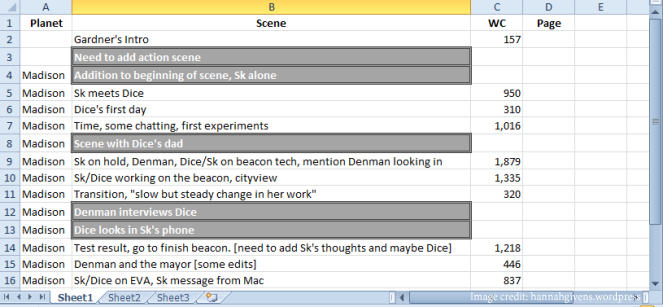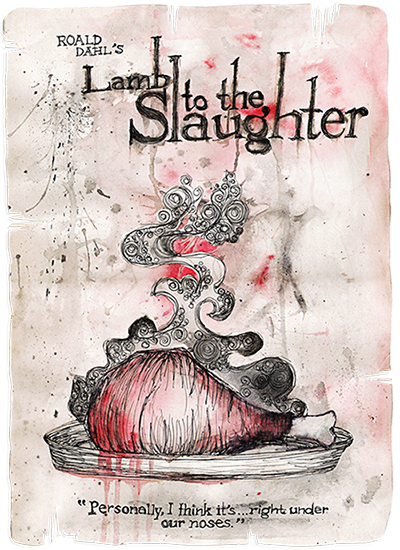The Art of Writing Short Stories
Writing short stories is an excellent way of getting started as an author, whether you’re writing for adults or children, as it gives you the opportunity to flex your writing wings. You can also start getting your work published, whilst not having to worry about writing a great tome.

But what are the key elements to creating highly readable short stories? Below are some top tips to consider as you plan that best-seller!
A catchy scenario
Although an interesting scenario is needed in all books, in short stories it’s even more important due to the shorter length. Whereas novels allow you to write in greater detail and with a more developed plot line, short stories need to grab interest right from the start.
Short stories need a plot that grabs the reader’s attention almost in the first sentence, and that will then run throughout the story. It can also be a completely off-the-wall take on an everday event.
Think of Roald Dahl‘s bizarre short story “Lamb to the Slaughter” (the title is also a great pun on the English proverb “Like a lamb to the slaughter”). A wife kills her husband, who threatens to divorce her, with a frozen leg of lamb and then serves it up, cooked, to the unsuspecting investigating policemen.
It’s important to remember that, in short stories, you’re writing within a small time period, maybe over one day or even less. Whereas this may seem very limiting, it does mean you have to pick up on little details and human reactions that fill the story out.
Plot set-up
A good story needs a good plotline – and a bit of planning goes a long way in making writing easier. A plot can be created by following a very simple structure:
- The hook – This needs to be in the first paragraph, to grab the reader’s attention. It can be a notable event or problem that resonates with readers, drawing them into the story.
- Conflict – We’ll get to this again in a later point – but this can be described as tension between a character and their “internal voice”, or as tension between characters.
- Complication – Ask yourself – does the protagonist or characters come across obstacles they must overcome? Does this prevent them from reaching their goal?
- Transition – Characters may have the chance to overcome obstacles in their way or may find an alternative route towards their end goal. This is another device that can be used to keep the narrative moving.
- Flashback – This can be used to insert past events into the story to give context to the story. It’s great to use this as device as it may help events in the story make better sense.
- Climax – This is the point at which you really need to start tying the threads of the story together for the conclusion.
- Falling action – As a resolution to the climax, you can write what happens after the threads have come together – the action starts to slow down towards the end.
- Resolution – You get to finish the story, giving readers a round up of how things ended. This is also a great time to use a cliffhanger – you can leave readers wondering if the conflict and tension really have been resolved.
Create a scene list
Think of this as a story board, much as directors use scene boards. Although you can start writing and then create the scene list later on, having one at the beginning does have several benefits.
Not only will you get to see the strengths and weakenesses of your plot before you start writing, it’ll also make it far easier when you actually come to write the story! You’ll get a better overview of the basics of the story as it unfolds, ensuring you don’t diverge away from the plan. And just like unnecessary scenes are cut from a film’s final reel, any scene that doesn’t add anything beneficial to the story’s plot needs to be scrapped.

An added benefit of a scene list, is that you will be able to see the story with all its most basic elements. This forces you to see the storyline without any superfluous content.
Where to start?
Don’t make the mistake of starting too far back in time. This may work fine for a novel, but short stories need to get to the point quickly. And this means starting it pretty much in the thick of the action. It’s about making the reader hit the ground running in the heat of the action!
Because of the length of short stories, you shouldn’t have to spend a good chunk at the beginning introducing it. Instead, this means creating a well developed plot that stands up on its own without too much introduction.
This means also creating well developed characters, and subtly introducing any background story into the plot if needed. Starting in the heat of the action keeps the plot moving and allows you to conclude the story sooner.
While there are several examples from books, we really like how Robert De Niro‘s “Raging Bull” pulls us in. It starts after his boxing career is over, and then we get to see how that unfolded scene-by-scene.
Condensed detail
It goes without saying that writing short stories isn’t the same as writing novels. Most short stories are around 5,000 words at a maximum, meaning you have less space than in a novel to develop the storyline.
You have to make sure you get straight to the point, writing in condensed sentences, and choosing your words very carefully. As a by-product, this also means you’ll have to develop your self-editing skills, as it means you’ll be cutting out all uneccessary words and details.
This is where the scene list comes in handy, as it helps you to plan your story very well – and stick to the major points. There is little room to spare to wander off on extra details, especially if they are irrelevant to the story.
Take inspiration from real people
Having a difficult time coming up with believable characters? Then there’s no better place to look for inspiration than the people around you, or the people you meet.
It’s the perfect opportunity to people watch, studying their mannerisms, patterns of speaking, as well as the way in which they interact with others. Don’t forget, the small things, like little movements of the hand, manners of walking, or manners of speaking and pronunciation, that produce the most believable characters.

It’s also important to know way more about your characters than the readers do, even if you don’t place too many details in the story itself. The most important character elements you need to give readers are: at least some of the character’s appearance; illustrating your character’s personality by showing how they act (using adjectives alone isn’t enough); and get your character to speak – which gives you a window into the character’s mind.
Point of view
Also known as the POV, this perspective is important to how the story gets told. As a writer, you need to decide who is going to tell the story and how much information the narrator can reveal.
It can create subtle characterisations within the narrative, and affect how we perceive the characters. The first person narrative allows readers to enter the protagonist’s mind. Using the first person can be limiting in that the story will only be told from the one perspective.
Less commonly used, the second person narrative treats the reader as a character in the novel. The third person narrative allows the narrative to be told either from many perspectives, or through the perspective of one character (and allows greater intimacy with the narrator).
Create tension
The story really begins when conflict and tension are created. It’s a great way of adding dramatic interest to the plot, and gives reader’s an insight into the inner workings and interactions of characters. This conflict can be created either between characters, or between a character and internal or external conditions. Using conflict is also a great aid to keeping the plotline’s pace moving. As in longer novels, such as Aldous Huxley‘s “Brave New World“, tension could be created between humans and technology. The ways in which tension can be created are numerous.
German writer Gerhart Hauptmann‘s novella “Bahnwaerter Thiel” is an excellent example of psychologial tension. Hauptmann plots the descent of the eponymous “hero”, Bahnwaerter Thiel, into madness which leads to a particularly gruesome ending. We won’t spoil the story for you, other than to say it is a very perceptive account of tension in a short story.
Minor plotlines
Having a subplot that runs parallel with the main story can sometimes add meat to the bones of the story – but only if it’s relevant to the plot itself. Adding one that doesn’t add anything to the storyline just wastes space and deflects attention from the main events.
For instance, if you’re writing a story about a dragon slayer, it doesn’t make sense to describe the protagonist’s fear of kittens. It would make better sense to describe the protagonist’s fear of heights, which may be described by a twist at the end; or maybe describing their family’s death at the hands of a dragon that explains their current profession.
Conclusion
With those points in mind, a short story or novella can be a great starting point, especially if you’re looking to start out in writing. Short stories can help define your style of writing and favourite genre – and it can act as the springboard to bigger works. And as with all the great writers, don’t be afraid to break the rules to write that best selling work!
You might also like:
Writing Process Explained for Non-Writers















Dr.Muhammed Farooq Khan
February 23, 2017NEED DOWNLOAD OPTION.
Kotobee
February 28, 2017If you are referring to Kotobee Author, all download options are here: http://www.kotobee.com/pricing